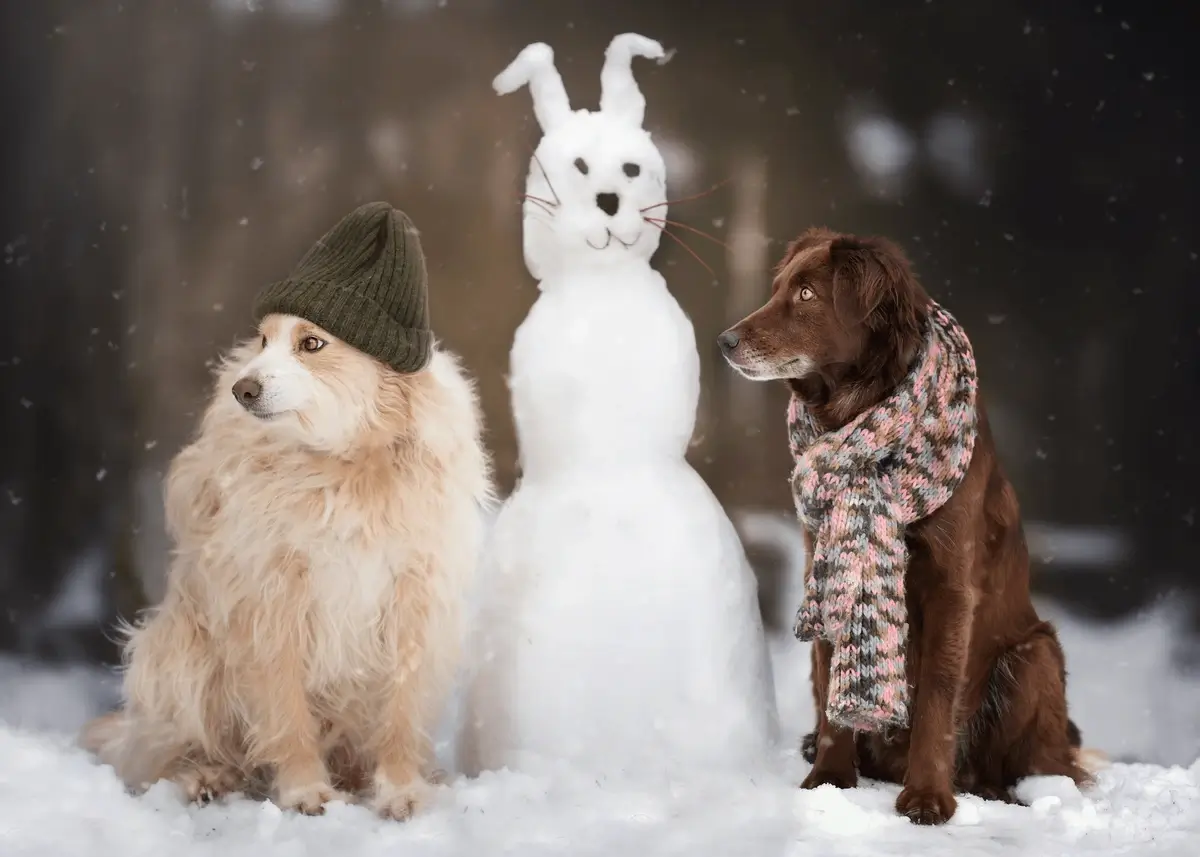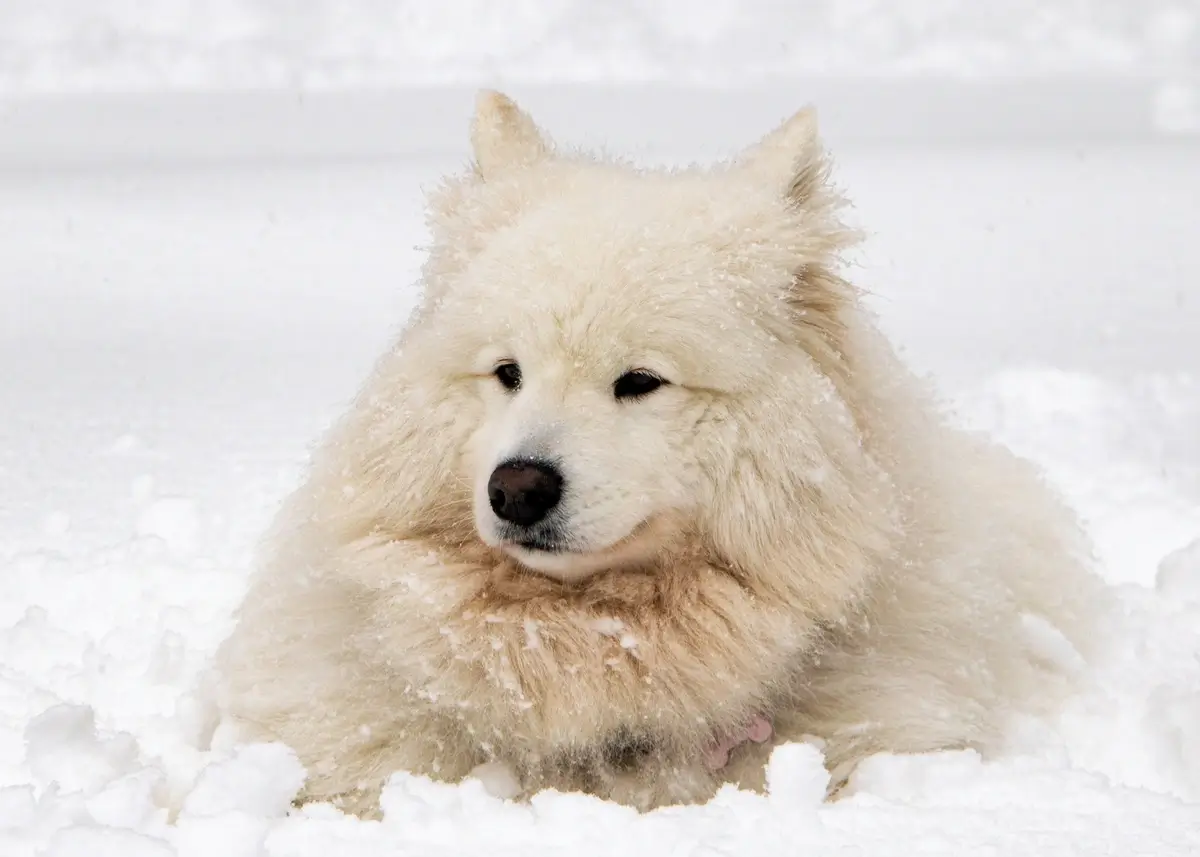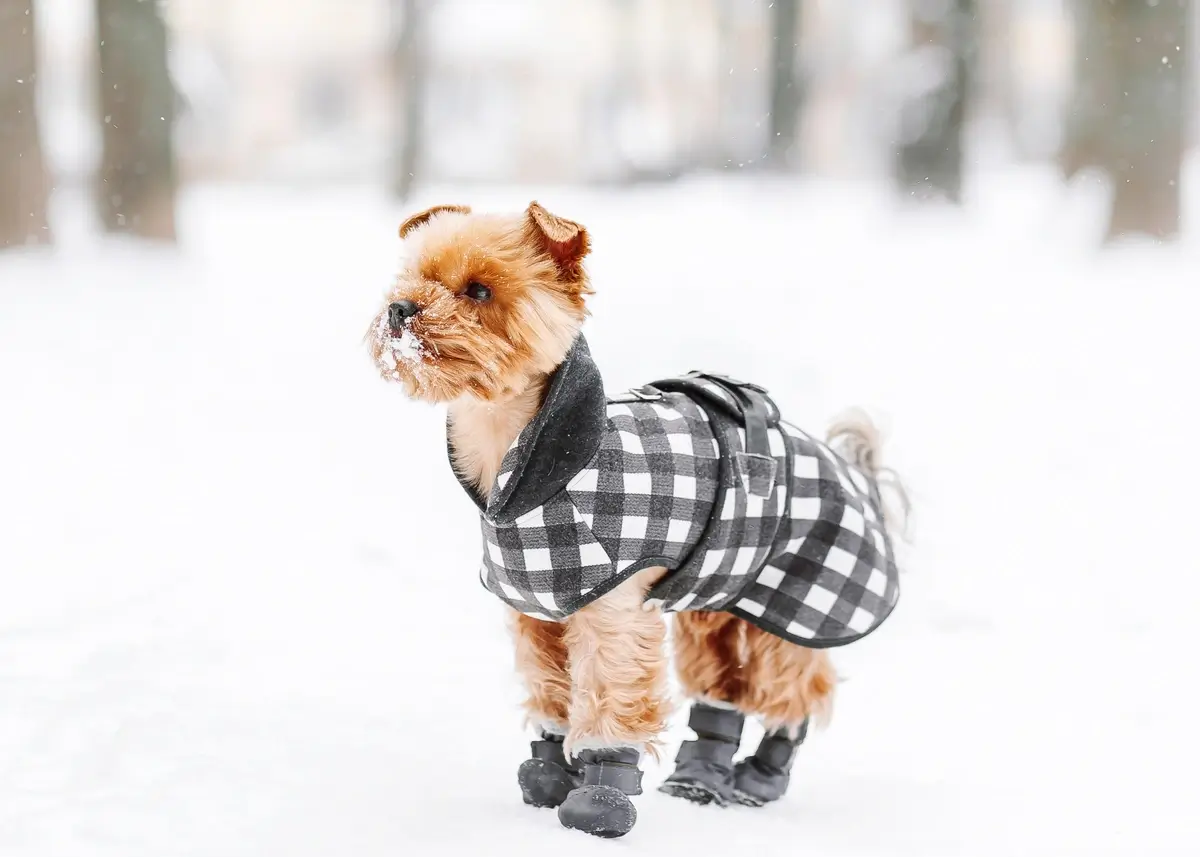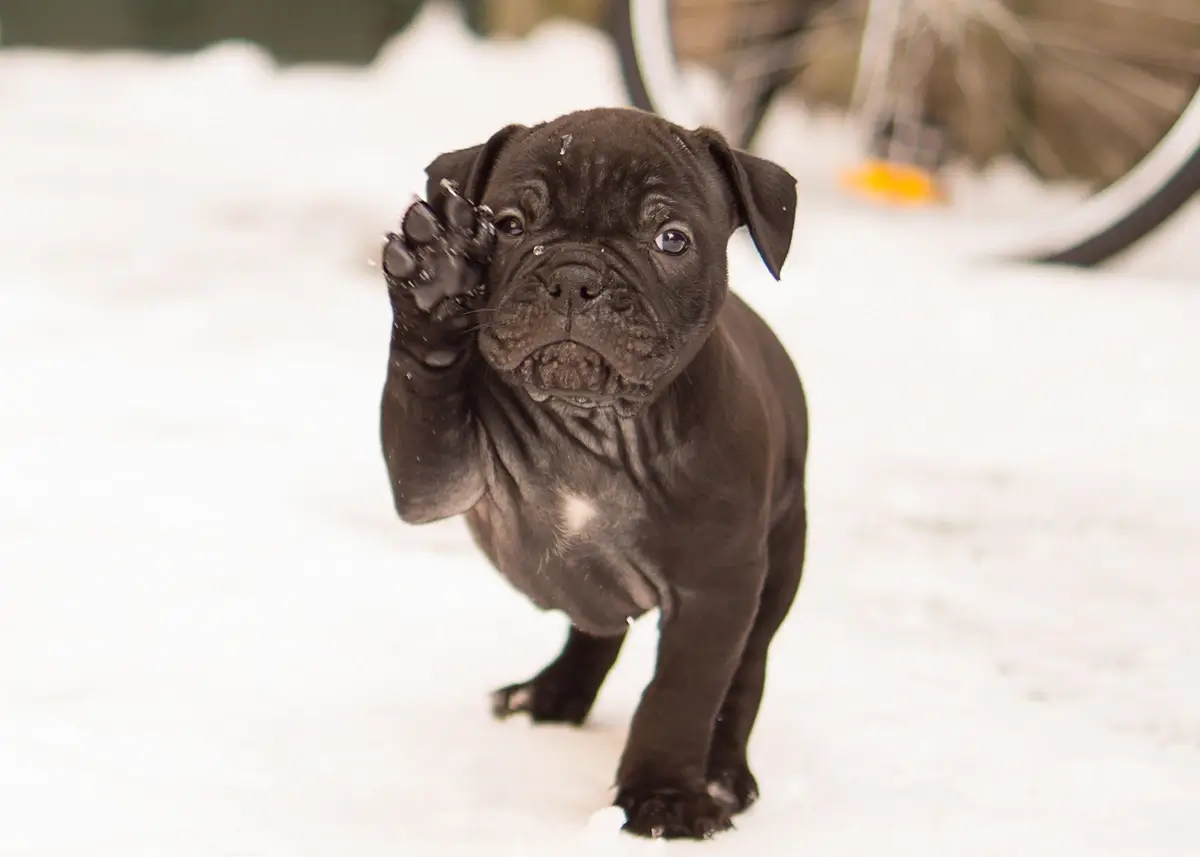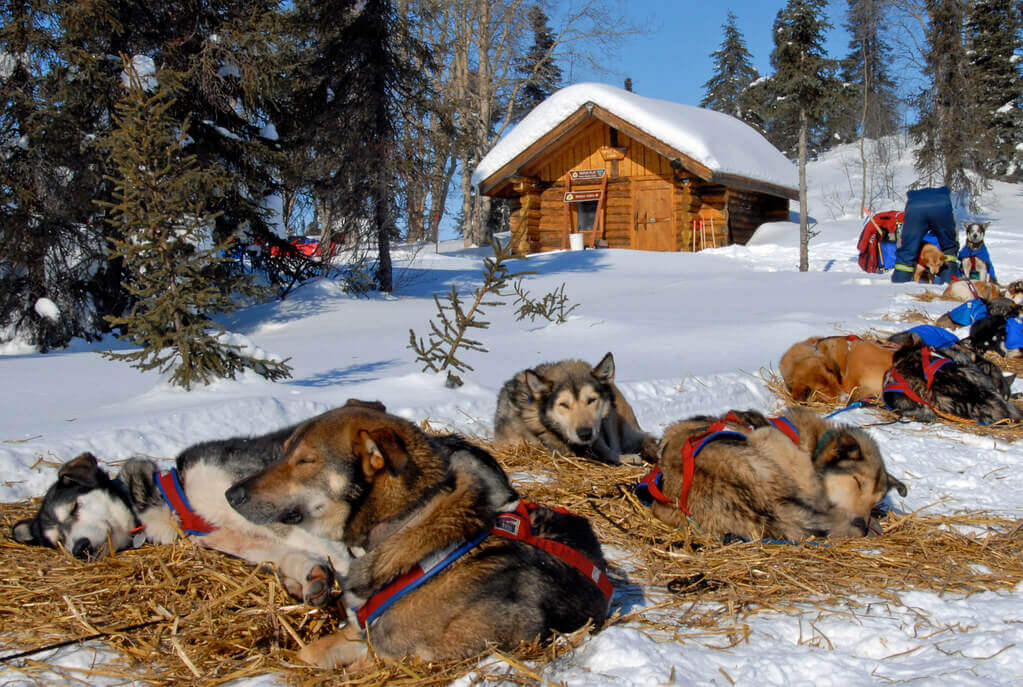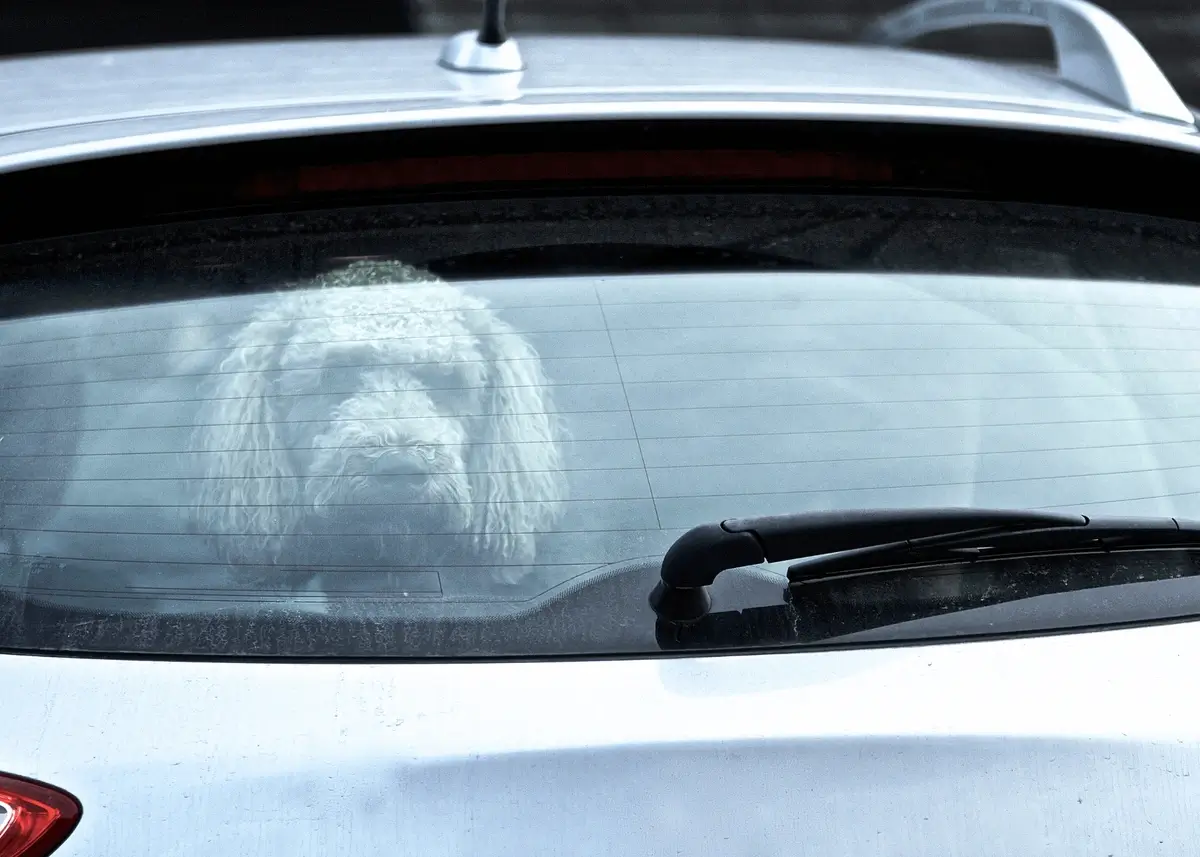Polar vortex. Bomb cyclone. Plunging temperatures. Arctic blast. If you’ve been hearing these phrases in weather reports lately, chances are you’ve been stocking up on bread and milk! Most of the nation is experiencing colder-than-usual frigid temperatures, and the weather outside is certainly frightful! That means it's time for cold weather safety tips for your furry friends.
You may wake up to a winter wonderland with fresh snow blanketing a sparkling landscape with the sun glinting off icicles. It may inspire you to take photos of pets in snow with the gorgeous, powder-perfect conditions as a backdrop to add to your “cute winter pets” social media photo collection. Strap on your snowshoes, leash up your canine hiking buddy, and set out on a well-marked trail for some winter adventures.
In contrast, mixing cold weather and pets is a scenario that may make some people nervous. You may have relocated from a warmer climate and are now facing your first traditional winter. You might not know the proper precautions to take. If you’re unsure of what to do, you may need some tips for how to handle pets and cold weather.
Many dogs enjoy cold weather and playing in the snow, but some breeds are better equipped for it than others. Some breeds make great cold weather pets that actually enjoy and thrive in colder climates and winter weather conditions. We’ve written about the best cold weather dog breeds that are equipped to handle winter weather. These dog breeds are known for their ability to comfortably endure cold weather. This is due to their thick coats of fur and a historical upbringing that made them masters of a harsh climate.
With the exception of a few breeds, most dogs are not meant to live in cold climates and need your help staying safe and warm this winter. Regardless of your cold weather comfort, all pawrents want to guarantee their pets' safety in cold weather. Use these cold weather tips for pets and follow helpful advice on how to protect pets in winter during these chilly months.
13 Cold Weather Tips For Pets to Keep Your Puppy Warm This Winter
1. Leave their natural coats alone
In the wintertime, it’s important to remember that not all dog coat types are created equal. Dogs can sport a wide variety of coat types, ranging from fine, curly hair to thick double fur coats. Winter is not the time to be closely shaving your pets. In particular, never, ever shave a double-coated dog! The coarse, longer, weather-resistant outer hair provides protection from the elements, and the finer, thin hair acts as lofty insulation. Double-coated dogs typically do not need to wear accessories such as coats or sweaters because their hair type naturally protects them from harsh weather conditions.
This dual-layer fur protects against frigid temperatures much better than a single layer would; it functions similarly to down on birds or a wetsuit for humans. Not only does this lessen their ability to maintain body heat, but it can also create irritation on sensitive skin if not done correctly. It’s always best to leave clipping and grooming of a double-coated dog to professionals; otherwise, you may end up doing more harm than good!
Dogs with short, single coats are especially vulnerable to cold weather, as they have less fur to protect them from the elements. Small dogs and puppies are also at a higher risk, as they have a smaller body mass and therefore lose heat faster. Making sure those particular breeds stay warm in the winter months is especially important for any responsible pet owner.
2. Dress for the weather
It is important to ensure that your dog is properly outfitted for the cold weather. Lucky for us that there are so many cute yet functional winter dog coats & sweaters options available to keep your pups comfortable even during the chilliest days of the season.
3. Know your dog, not just the breed
Even though your dog may be a well-known cold weather breed, your pet’s cold weather tolerance may surprise you when you find out they actually hate the cold. Likewise, your short-haired, single-coated dog may love to play in the snow, but they may be vulnerable despite their love of chasing snowballs.
4. Watch for frostbite and hypothermia
Dogs are susceptible to frostbite and hypothermia just like humans. In fact, their bodies actually cool down faster than ours do, making them more prone to these conditions. Frostbite in dogs can cause tissue damage due to blood being redirected away from vital organs due to a drop in body temperature. Hypothermia is when a dog’s temperature drops below 99 degrees and can cause cardiac and respiratory failure, brain damage, coma, and even death.
5. Protect their paws
If you have a pup and live in an area where snow, salt, and ice are common winter occurrences, it is important to take extra precautions to keep their paw pads safe from the cold, wet weather. Cold weather can be hard on a dog's paws. Ice and snow can cause cracking and bleeding, so it is important to wipe your dog's paws, legs, and belly down after playing in the elements with a warm, dry towel. Check their paw pads for any signs of injury, cracks, redness, or irritated spots. You can use petroleum jelly or soothing dog paw balm to treat any signs of distress.
You can be proactive by protecting your dog’s paws in a few ways before venturing outside your house. Consider investing in a winter paw protection kit including a pet-safe ice melter, paw balm, and special booties to use on the ice and snow around your property. With proper care, your dog's paws will stay healthy and comfortable all winter long!
Photo Credit: Bureau of Land Management, My Public Lands Roadtrip: Iditarod National Historic Trail in Alaska Series
6. Provide warm shelter for dogs that love winter weather
Keeping pets warm in winter should be a priority whether they like going inside or outside. If your pets do prefer being out in the cold, provide them with a covered, warm shelter to take a respite from the elements. Most people would assume using old towels and blankets would provide a cozy spot, but these actually absorb moisture from the ground and can make your dog even colder. Lining the ground and beds with straw or hay will provide better insulation and keep your pet dry.
7. Give fresh water & high-quality food
It is important to remember that dogs can get dehydrated in the winter just like humans can. Make sure to offer your dog plenty of water and watch for signs of dehydration such as excessive panting or lethargy. Provide plenty of fresh water, monitoring for any ice formation or dirty melted snow.
In addition, dogs can expend more energy in cold weather trying to keep warm. Make sure you provide high-quality, nutritious food higher in calories to make up for any change in energy levels.
8. Don’t leave pets inside your car in the cold
Never lock your pet in a cold car! You may think leaving your pet in the car even for a short period of time will protect them from the elements, but think again. Your car can become a giant refrigerator, trapping cold air inside.
9. Watch for antifreeze
Did you know that antifreeze can actually taste sweet to animals? Be sure to keep any antifreeze away from pets, and place the cap on tightly to prevent accidental spills.
10. Check for pets around vehicles
Some pets enjoy the warmth from engines or will seek shelter under your car. Before turning on your ignition and driving away, check your hood and underneath your vehicle to see if any pets or animals have sought a cozy shelter.
11. Be careful around heat sources
Always monitor your animals around sources of heat by keeping them away from hot radiators, space heaters, furnaces, electric blankets, fireplaces, fire pits, and bonfires. Never use an electric blanket or heat pad for humans in their bed – instead, opt for a safer option, such as a warm water bottle or a heating pad made specifically for dogs. Keep cords away that can tempt teething puppies. Make sure to place heat sources out of the way so pets do not knock them over and start a house fire.
12. Tread carefully
Avoid walking on unmarked paths or trails. Try to stay on pre-cleared, well-marked familiar routes and paths. Never trust a frozen lake, pond, or creek because you never know when the ice will be thin enough to crack and fall through! Don’t be the leading story on the evening news by falling through ice or having to get rescued because you went off-trail.
13. Check their overall health
Winter is a great time to take your dog in for an overall wellness check. Your trusted licensed vet can check for any problems exacerbated by cold weather like arthritis. You can also ensure your dog’s microchipping information is up to date in case your pet loses its way in the snow since the landscape looks different and snow can mask any scents they’re familiar with.
Cozy Up With a Pawrade Puppy
We love keeping all our puppies safe, not just the ones that love the snow! We hope our list of cold weather tips for pets will keep your furry friends warm. Check out our puppies for sale to find the perfect one to cuddle with by a roaring fire this winter!
*Paid partnership with our friends at Chewy
